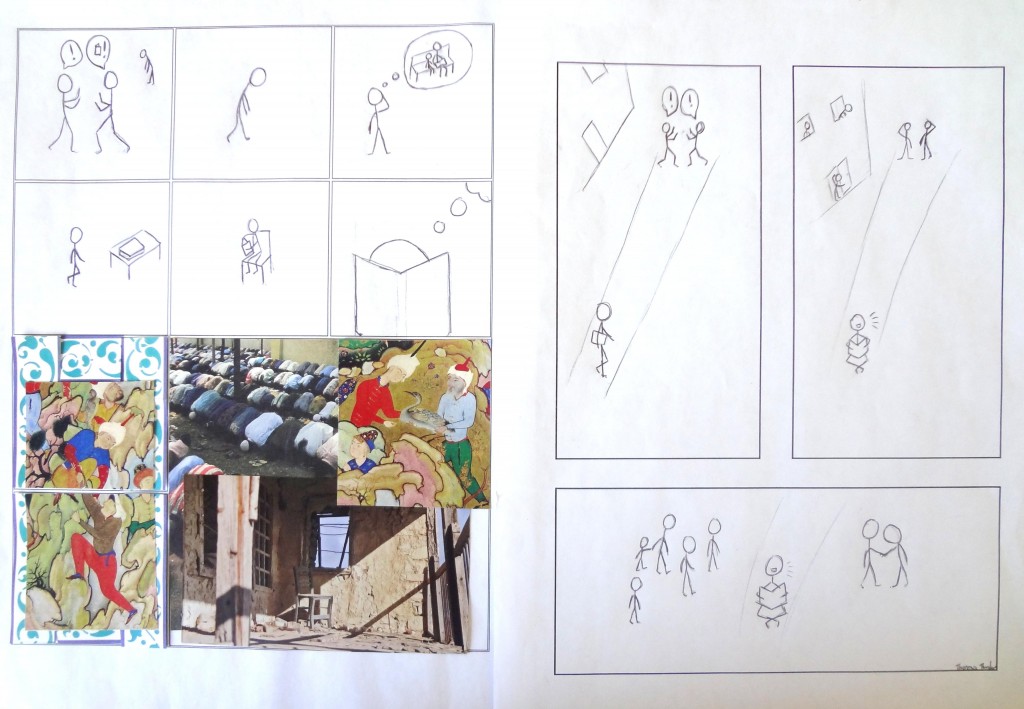Week 2
posted in Uncategorized |Week 2: Constructions of Islam
In his essay Reading the Qur’an, Ziauddin Sardar describes his experience reading the Qur’an as he grew up, resulting in his association of the Qur’an with his warm and loving home. Sardar notes that there exists an immense variety of interpretations of the Qur’an, but he expresses his frustration in those who misuse the Qur’an to reject love and peace in favor of “justification for misogyny,” “validation for hatred of others,” “oppressive laws,” and “arguments for superiority of certain classes and individuals” (9). He explains that humans must think and reflect about the meaning of the Qur’an in the circumstances of today, rather than blindly use its words to justify wrongdoing by assuming they have “absolute understanding,” which is not a characteristic of any human, but of God alone (10).
In this short graphic novel strip, I tell the story of a boy who witnesses two men fighting with each other and misusing the words of the Qur’an to justify their anger and hatred. The boy is upset and feels helpless at first. He thinks about the times he would sit with his mother and read the Qur’an, just as Sardar did as a young child (3), and goes to pick up his Qur’an. As he is reading, he thinks about what the Qur’an means to him: friendship, charity, unity, and light. An image of one man pulling up another man from the panel below him demonstrates charity, or zakat, as he is helping someone who is less fortunate that him (as they are in two different panels and thus two different social circumstances). Friendship and zakat are further demonstrated in an image of two men sharing a goose. The boy thinks about the potential unity of all Muslims, joined in prayer over the words of the Qur’an, demonstrated by the image of Muslims performing salat. He imagines that the Qur’an should bring light to darkness, like sunrise.
After contemplating these ideas, the boy decides to take action. He walks over to a spot near where the men are fighting, sits down right on the ground, and begins to recite. He quickly gains the attention of passerby and people in a nearby house, as well as the two fighting men. They drop their fists and come over to listen to the recitation. Sheepish about their argument and hearing words of peace and unity flowing from the mouth of a young boy, the men shake hands in forgiveness, as a crowd gathers to listen to the beautiful sound of the Qur’an. This conclusion represents the peace and harmony that can be achieved by reading the Qur’an with an open mind and reflecting on how its messages can be best incorporated into daily life.